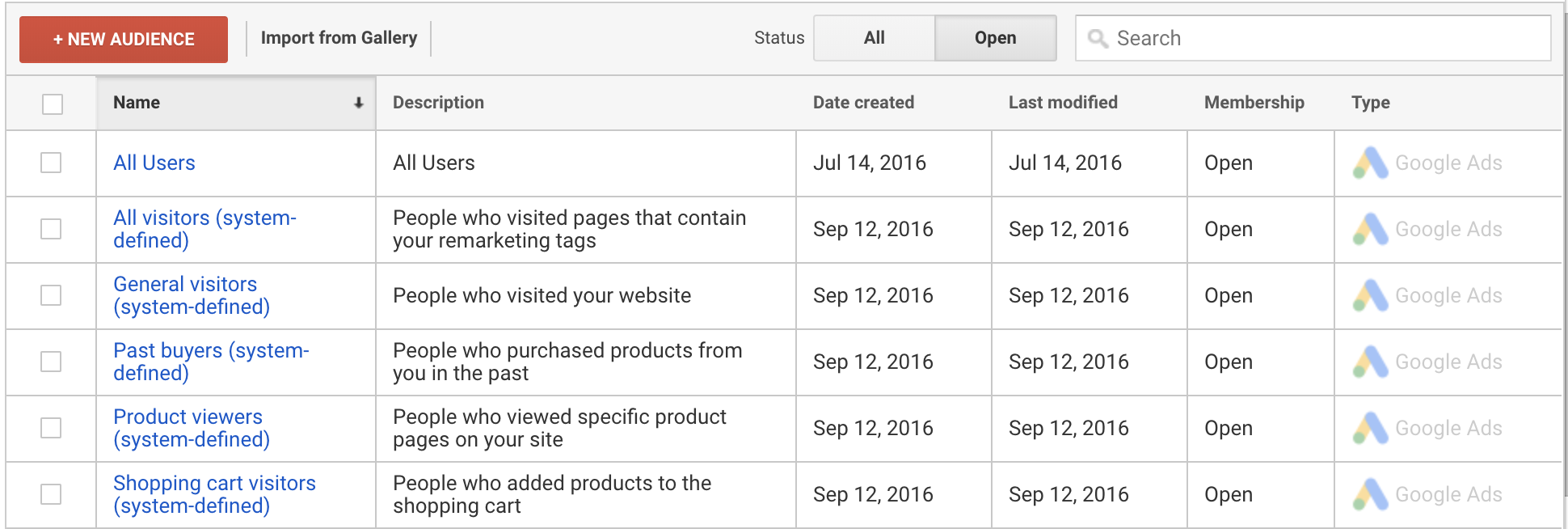A Complete Guide to Remarketing In Google Analytics
A Complete Guide to Remarketing In Google Analytics
Blog Article
Harnessing Remarketing in Google Analytics: A Comprehensive Overview
Harnessing remarketing in Google Analytics offers companies a strategic edge in reaching out to possible customers. This overview will lose light on the essential steps involved in utilizing the full capacity of remarketing in Google Analytics, leading to enhanced marketing end results.
Understanding Remarketing in Google Analytics
Remarketing in Google Analytics allows organizations to tactically target customers who have actually formerly interacted with their website or mobile app. By leveraging information from Google Analytics, businesses can create personalized remarketing checklists based on individual actions, such as web pages seen, actions taken, or details goals attained. This powerful device allows companies to re-engage with customers that have shown rate of interest in their services or products, ultimately raising the chance of conversion.
Understanding the different kinds of remarketing strategies is important for a successful campaign - What Is “Remarketing” In Google Analytics?. Google Analytics offers numerous choices, consisting of common remarketing, dynamic remarketing, and remarketing listings for search advertisements (RLSA) Each kind offers an unique function and can be customized to satisfy details marketing objectives
In addition, analyzing the performance of remarketing projects is important for optimizing outcomes. Google Analytics gives important insights right into the performance of different remarketing techniques, allowing businesses to make data-driven decisions and refine their targeting technique. By constantly changing and monitoring remarketing efforts based on analytics information, organizations can make best use of ROI and drive success in their marketing campaigns.
Establishing Remarketing Campaigns

After establishing up audience lists, the next step is to connect Google Analytics with Google Ads. By linking these two systems, organizations can seamlessly transfer target market checklists from Google Analytics to Google Ads for remarketing functions. This assimilation enables even more specific targeting and better project efficiency.
As soon as the accounts are connected, organizations can create remarketing projects in Google Ads using the target market details formerly defined in Google Analytics. These campaigns can be customized with certain advertisement creatives, messaging, and bidding process approaches to properly re-engage with past visitors and drive conversions. By adhering to these steps, organizations can leverage the power of remarketing to enhance their advertising efforts and raise ROI.
Using Audience Division Approaches

Predefined segments in Google Analytics enable you to swiftly analyze usual audience groups like brand-new customers, returning individuals, or users who completed a particular objective on your internet site. Custom sections, on the other hand, enable you to develop unique segments based on details criteria that are very important to your organization purposes. Dynamic remarketing checklists automatically readjust based on user actions, showing customized ads to individuals who have actually connected with your site in certain methods.
Studying Remarketing Performance Metrics
Upon examining the effectiveness of remarketing campaigns in Google Analytics, the analysis of vital performance metrics offers important insights into target market interaction and conversion prices. By delving into metrics such as click-through rates (CTR), conversion rates, click here to find out more cost per purchase (CPA), and return on ad invest (ROAS), online marketers can assess the success of their remarketing initiatives. CTR shows the percentage of individuals who clicked the ad after watching it, showing the ad's importance and allure. Conversion rates determine the portion of individuals that finished a wanted activity, such as making an acquisition, after clicking the advertisement. CPA discloses the average cost incurred for each conversion, helping evaluate campaign profitability. ROAS, on the other hand, evaluates the income produced for every single buck spent on marketing. Evaluating these metrics enables online marketers to maximize campaigns, improve audience targeting, and allocate budget plans properly to enhance overall remarketing performance.
Maximizing Remarketing Techniques
When refining remarketing approaches in Google Analytics, concentrating on audience division is extremely important for attaining campaign success. By splitting your audience right into details segments based on their actions, demographics, or rate of interests, you can customize your advertisements a lot more effectively to each team. This targeted approach boosts the likelihood of involving customers that have currently shown passion in your services or products, bring about higher conversion prices.
Another critical aspect of maximizing remarketing methods is continuously testing and refining your campaigns (What Is “Remarketing” In Google Analytics?). A/B testing different ad creatives, messaging, or deals can assist you identify what resonates ideal with your target market and drives one of the most conversions. By assessing the efficiency of these examinations in Google Analytics, you can make data-driven decisions to maximize your remarketing efforts even more
Moreover, leveraging vibrant remarketing can substantially enhance your project results. This attribute permits you to show personalized ads to customers based upon their past communications with your site, showcasing product and services they have formerly viewed. By supplying tailored content to individuals based on their actions and passions, vibrant this post remarketing can help enhance involvement and drive conversions.
Verdict
Finally, utilizing remarketing in Google Analytics is a strategic method to target users that have previously engaged with a website. By producing personalized audience listings and making use of audience division approaches, companies can enhance remarketing advocate raised conversion rates. Evaluating efficiency metrics and constantly maximizing strategies are important for optimizing the performance of remarketing initiatives.
Google Analytics supplies various options, including conventional remarketing, dynamic remarketing, and remarketing listings for search ads (RLSA)After setting up audience checklists, the next step is to link Google Analytics with Google Advertisements. By connecting these 2 platforms, businesses can effortlessly transfer target market listings from Google Analytics to Google Advertisements for remarketing functions.Once the accounts are connected, services can create remarketing projects in Google Advertisements making use of the target market he said lists previously defined in Google Analytics.When refining remarketing approaches in Google Analytics, focusing on target market division is paramount for achieving project success.
Report this page